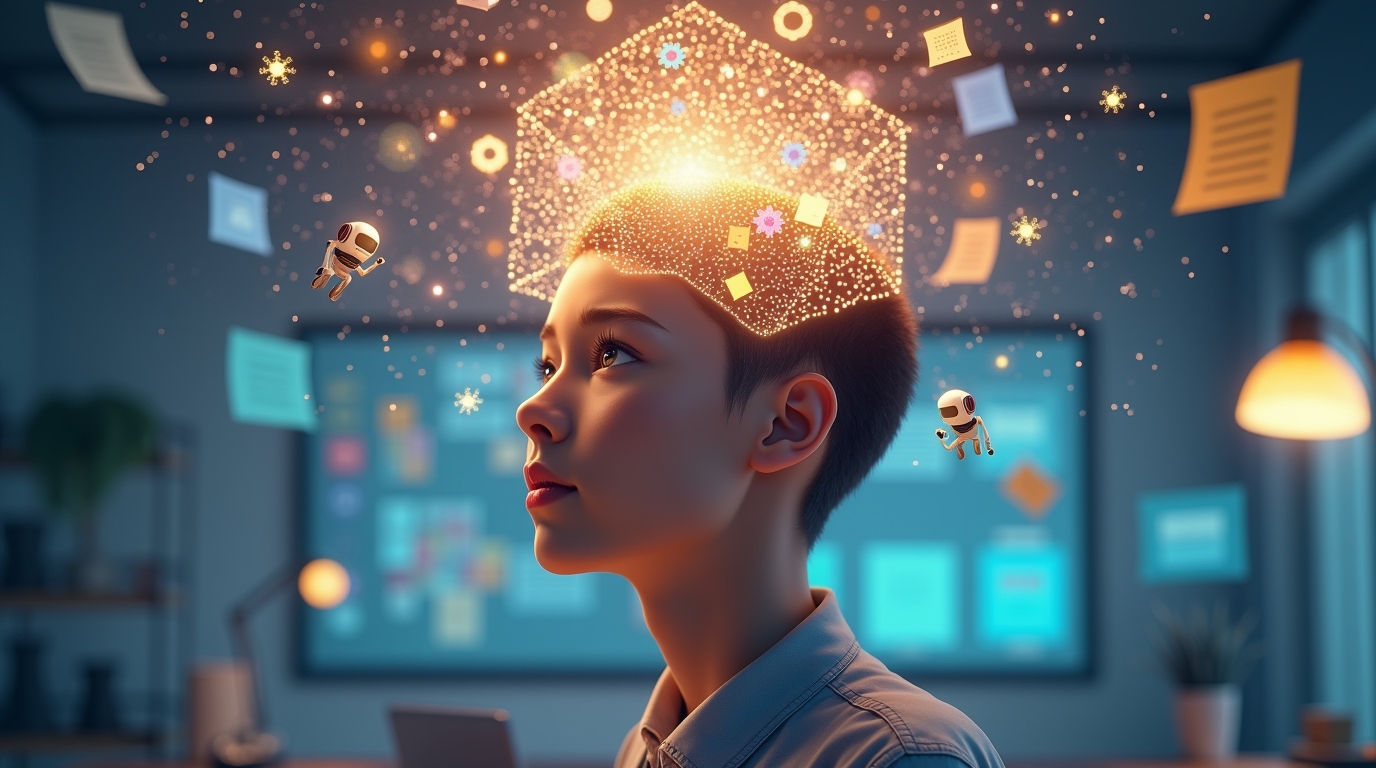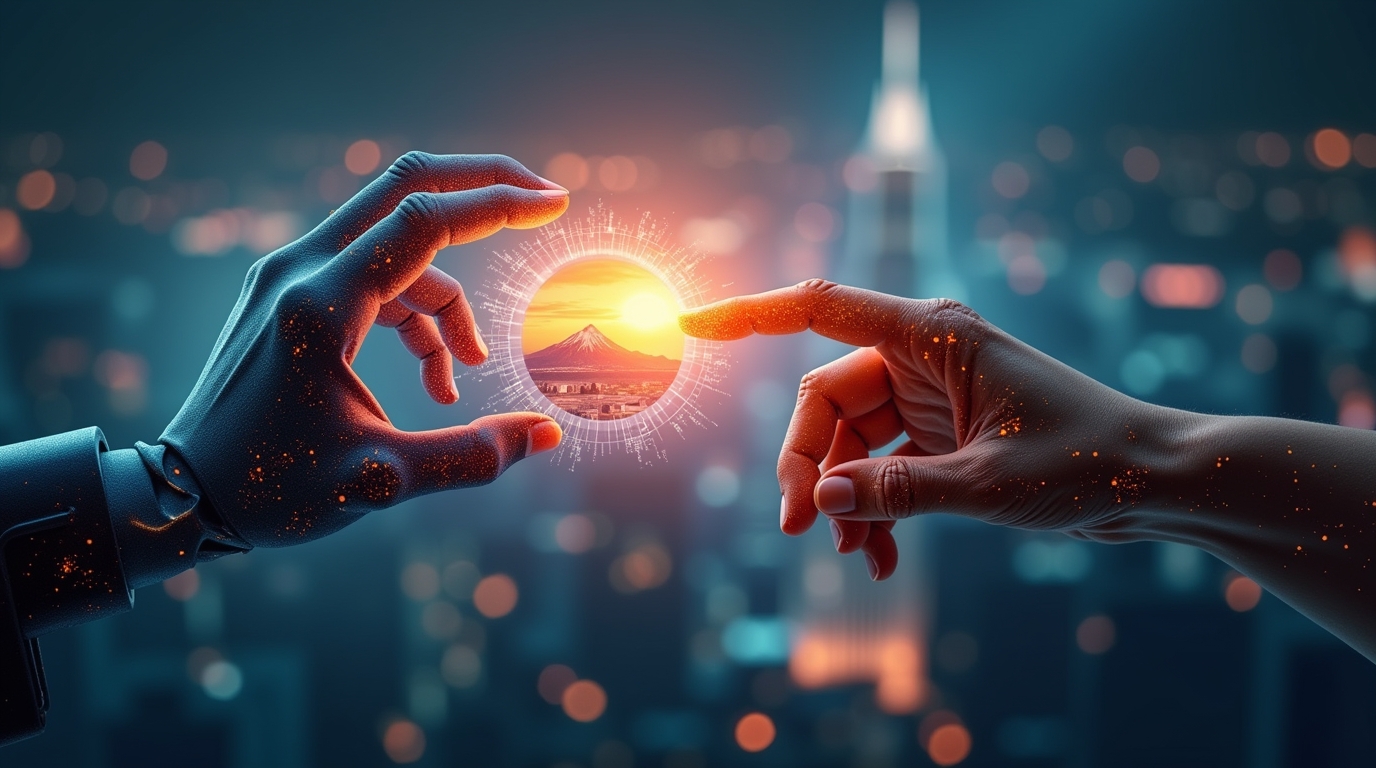Introduction: The Digital Detective Arrives
Cold cases: they have hung in dusty evidence rooms and plagued the nightmares of police detectives over the decades. These are the cases that have gone cold, where something has dissipated, memories of the witnesses have dimmed and technology has become as far as it can go. They are the images of broken families in torturous limbo and an unpaid debt of justice. Case closed was, literally, in the case of many generations, case closed. Justice Never Sleeps: How AI is Solving “Unsolvable” Cold Cases with New Technology.
Yet a new, chain-smoking investigator has come into play, one that never rests, never loses a face, and can go through mounds of information in the time it takes to blink. This researcher is not a human being; artificial intelligence. We are standing at the precipice of a revolution in forensic science, where underrated and niche AI tools are being wielded to crack open files once deemed “unsolvable.” It is not science fiction, this is the new reality of justice. This article, “Justice Never Sleeps: How AI is Solving “Unsolvable” Cold Cases with New Tech,” delves into the cutting-edge technologies breathing new life into old evidence, offering long-awaited closure and proving that time is no longer an ally for those who thought they had escaped the past. If you found this glimpse into forensic AI fascinating, you’ll be amazed by the other underrated tools we’re exploring in our article, visit AI Smartly.
The Cold Case Problem: Why Traditional Methods Hit a Wall

However, before we can know the solution to the problem of AI, it is important that we get to realize the extent of the problem at hand. The United States alone has an estimated hundreds of thousands of unsolved homicides and missing persons cases stretching back 50 years or more. The conventional investigation techniques have immensely tremendous obstacles:
- Evidence Overload: A single case can generate thousands of pages of documents, hundreds of photos, and numerous hours of audio/video. A human team cannot work through a lot within a reasonable time.
- Degraded Evidence: Physical evidence like fingerprints, DNA, and photographs degrade over time, making them harder to analyze with older techniques.
- The “Needle in a Haystack” Dilemma: A crucial connection—a name mentioned in a single interview, a vehicle spotted in the background of a photo—can be easily missed when buried in a massive file.
- Witness Memory Fade: As years turn into decades, witnesses pass away or their recollections become less reliable.
This is where specialised AI tools, that specialise in particular forensic tasks, are making the difference. They do not replace detectives, they enable them and are a force multiplier to overcome such limitations of the past.
How AI is Solving “Unsolvable” Cold Cases: The Toolkit of the Future
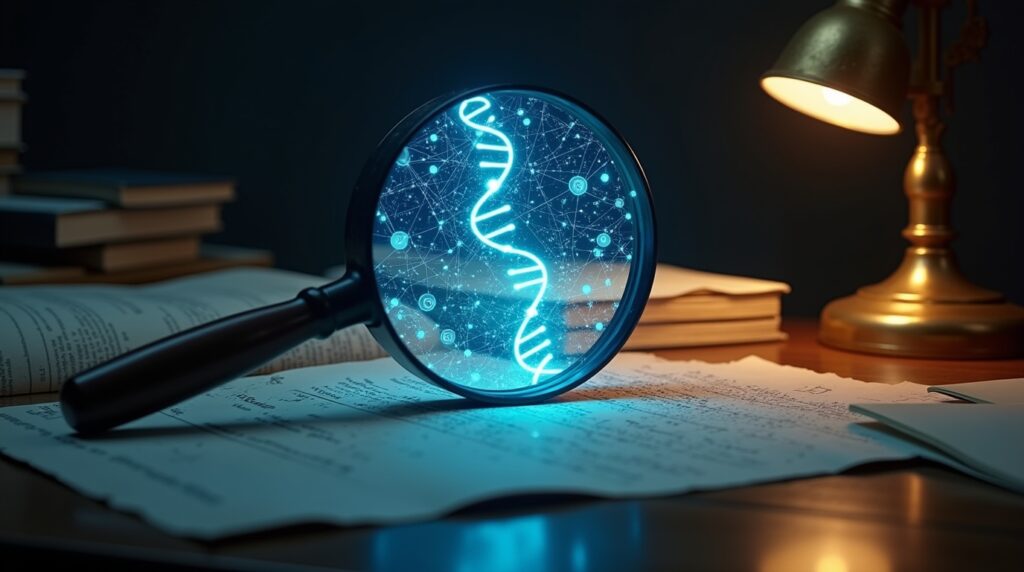
The title of our article, “Justice Never Sleeps: How AI is Solving “Unsolvable” Cold Cases with New Tech,” is not just a catchy phrase—it’s a description of a multi-faceted technological approach. The following are the most important tools in bringing this revolution.
1. Genetic Genealogy and DNA Testing: The potential of GEDmatch and FAMILIAL SEARCHING
The application of the AI in forensic genetic genealogy is one of the most publicized advancements. It starts with a DNA sample from a crime scene, but instead of just looking for an exact match in a criminal database (like CODIS), AI-powered tools can identify distant relatives.
- How it Works: Companies like Parabon NanoLabs use sophisticated algorithms to analyze DNA data uploaded to public genetic genealogy databases like GEDmatch and FamilyTreeDNA. The AI searches through millions of genetic data to match possible family relations even distantly to the third or fourth degree relative.
- The Niche AI Tool: The software builds out vast, complex family trees from these distant matches. It then uses demographic and biographical data (like age, location, etc.) to narrow down the list of possible suspects to a manageable number for detectives to investigate further.
- Real Example: The most famous case is the identification and capture of the Golden State Killer in 2018. Joseph James DeAngelo was convicted after 40 years of avoiding justice by way of genetic genealogy. This one case broke open the dam resulting in dozens of blue blooded cold case rapes and murders across the nation.
2. Facial Recognition and Image Enhancement: The Visible Hatred

Old photographs and surveillance footage are usually exposed to some form of blurriness, graininess, or other types of damage. Conventional improvement can go so far Face recognition and image super-resolution tools aided with AI neural networks are near-miracular.
- How it Works: AI models, particularly a type of machine learning called Generative Adversarial Networks (GANs), are trained on millions of clear images. They get to know how a human face is supposed to appear like. When fed a low-resolution image, the AI can “hallucinate” (in a technical sense) the missing details, sharpening features, reducing noise, and even generating age-progressed images from decades-old photos.
- The Niche AI Tool: Companies like Clearview AI (though controversial) and more forensically-focused software are used by law enforcement to compare enhanced images against databases of mugshots or public photos. Other tools will fix a shaky video footage and can sharpen a number plate in a dim video.
- Real Example: In 2019, Dutch police used AI to create a highly detailed composite of a man whose body was found in 1998. The AI created image was broadcasted so that he was identified within 24 hours, or a mystery duration of 21 years.
3. Natural Language Processing (NLP) for Document Analysis: Connecting the Dots
A cold case folder is a hill of unorganized text: police files, evidence inventories, tip-line sheets and interview transcripts. A human could easily fail to notice a slip of connection between some statements that are said several years apart Natural Language Processing (NLP) does not.
- How it Works: NLP algorithms can read, understand, and cross-reference thousands of documents in minutes. They are also able to detect names, addresses, cars and search phrases, drawing their relationships throughout the file of a case. It can raise red flags in terms of inconsistencies in statements, or it can make it possible to discern a previously missed mention of an important item of evidence.
- The Niche AI Tool: While many are custom-built for specific departments, platforms like IBM Watson and other enterprise-grade NLP engines are being adapted for this purpose. They become a virtual lead detective directing human detectives where to go to find the most effective leads.
- Real Example: While specific cold case solves are less publicized due to the behind-the-scenes nature of the work, departments using these tools report a significant increase in efficiency. They can rapidly re-index, search decades of paper records and discover once-lost leads that were repackaged in records.
The Ethical Cold Front: Navigating the Privacy Dilemma
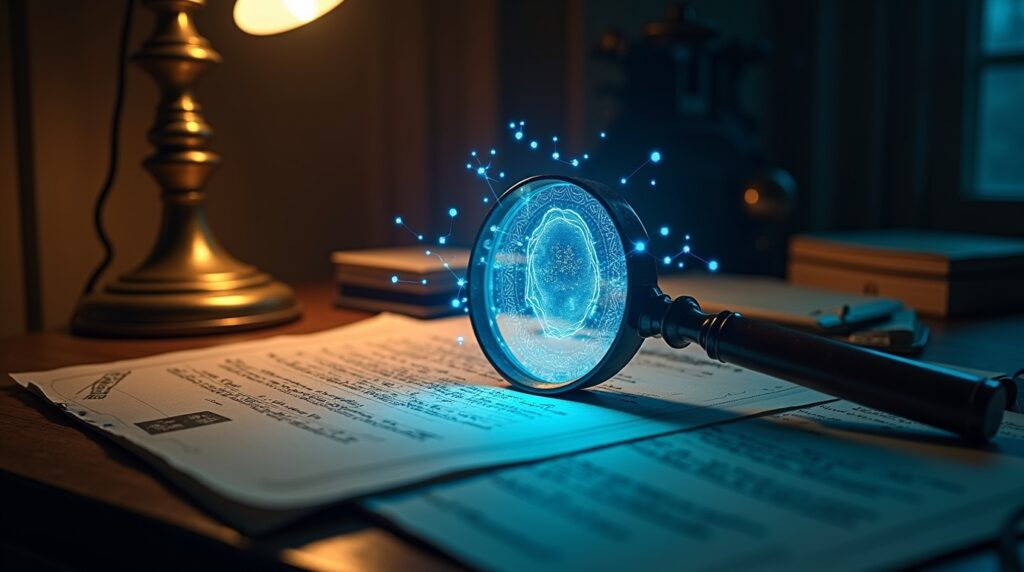
The effectiveness of such tools is also real and is accompanied by a huge ethical coolness. Facial recognition and genetic genealogy as uses of AI in law enforcement make us question privacy, consent, and bias of these methods to the extreme.
- Genetic Privacy: When you upload your DNA to a genealogy site to learn about your heritage, did you consent to it being used as a law enforcement tool? Now most databases give the choice to the user to opt-in to law enforcement search, although the discussion is ongoing.
- Facial Recognition Bias: Studies have shown that some facial recognition algorithms have higher error rates for people of color and women, risking false accusations and perpetuating systemic biases.
- Regulation and Oversight: The technology is advancing faster than the laws that govern it. There is an immediate necessity of transparent laws and control to avoid the abuse and recognize civil rights.
The key is transparency and regulation. This should only be accepted as investigative aids and not as a sovereign judge of guilt. It must not allow one injustice of its pursuit in attaining justice in one crime to form another injustice, and must therefore give leads to the human-detectives, to be used in supporting the respective lead with further evidences.
The Future is Now: What’s Next for AI and Cold Cases?
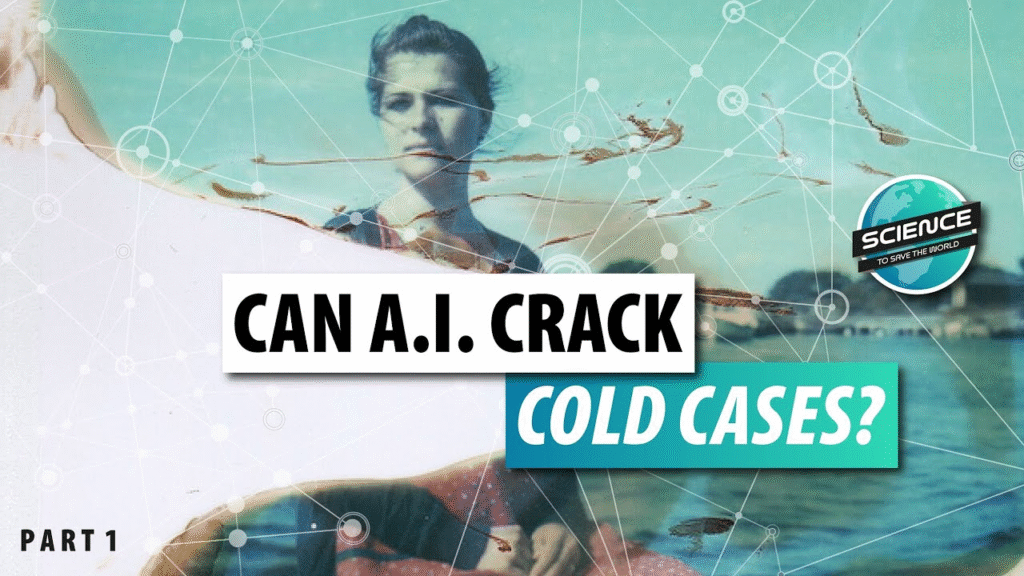
Technology is just becoming more powerful. In the future we will look to a world where:
- Predictive Analysis: AI could analyze the modus operandi from thousands of solved cases to suggest potential suspects or connections between seemingly unrelated cold cases.
- Voice Analysis and Audio Enhancement: Advanced NLP and audio models could isolate and enhance a single voice from a chaotic 911 call or restore audibility to decades-old tape recordings.
- Digital Twin Crime Scenes: AI could combine all evidence—photos, videos, witness statements, forensic reports—to generate an immersive, virtual reality recreation of a crime scene, allowing detectives to “walk through” an event that happened 30 years ago.
Conclusion: A New Dawn for Decades-Old Darkness
The message of this article, “Justice Never Sleeps: How AI is Solving “Unsolvable” Cold Cases with New Tech,” is one of cautious optimism. It is a paradigm shift in terms of these niche AI tools. They are the magnifying glass able to decode the faded ink, the clock that is able to turn backwards and the perfect detective with a photographic memory.
In the eyes of the family of the victims, this will be more than a technological advancement, as it will be the first crack of light after a long, dark night. It is the assurance that no case can ever be closed and no crime can ever be forgotten. As much as we need to walk through the ethical challenge, we need to tap into the potential with wisdom and caution. The ghosts of the past are not likely to find too much respite without AI as a mighty companion in the battle to find justice.
Email: adil.taskthegroup@gmail.com









